
This is what it was like in Toronto in the 1920s
The 1920s were a seminal time for Toronto—when the city, still deeply attached to its colonial roots, began to take the first baby steps toward becoming the multicultural metropolis of the present day.
By 1920, the population was more than half a million and suburban growth had already started.
The name of the city for the first time was becoming associated not only with the city proper, but also with the suburban municipalities that began to form outside of its boundaries, such as York and Forest Hill.
A few notable landmarks were built during the second decade of the twentieth century. The most memorable of them is the Sunnyside Amusement Park, which was situated on the shore of Lake Ontario, on Sunnyside Beach.
It opened on June 28, 1922 and was a hugely popular summertime attraction for thousands of Torontonians.
In addition to numerous roller coasters and merry-go-rounds, it featured such events as the annual Easter Parade and the Miss Toronto Pageant. Some of the relics still survive and are popular even today, including the Sunnyside Pavilion and the Palais Royale.
The short-lived Casa Loma Hotel opened in 1927, the same year when the provincial government abandoned the Ontario Temperance Act.
The building advertised as an "apartment hotel," where a room could be rented for as long as the guests wished, at the price of $6 a day.
The former grand residence of Sir Henry Pellatt was also equipped with dancing and dining halls, but it failed as a hotel and closed down a mere year later.
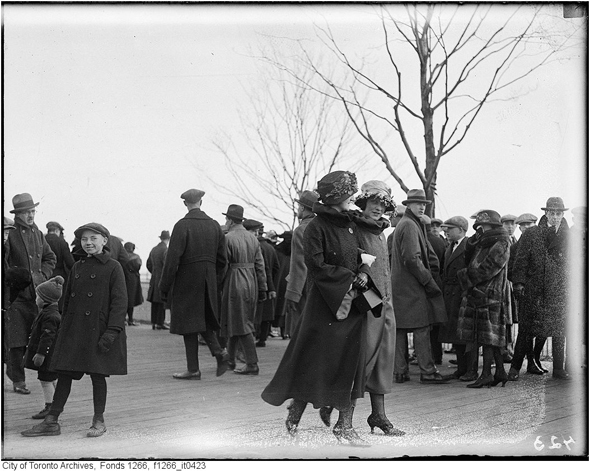
Another important structure built during this decade is Union Station, opened on August 6, 1927, seven years after it was completed due to an ongoing conflict on the matter of financing the project, as well as changes to its architectural plan.
In 1921, the Toronto Transportation Commission was created as a result of a popular referendum. The new organization started to operate on September 1 of the same year. On October 2, the first Peter Witt streetcar rolled out onto the streets of Toronto.
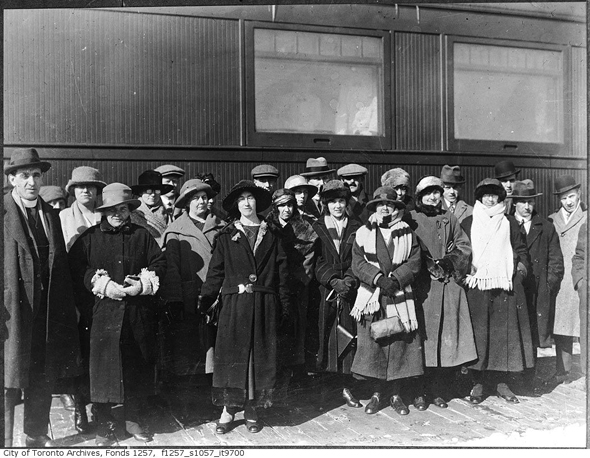
Beginning in the 1920s, the city's cultural demography started to become more diverse. In 1921, 62 per cent of all residents had been born in Canada and nearly three out of ten had been born in the United Kingdom.
By the end of the decade, a significant number of residents were born outside of Canada, the UK, and even Europe altogether.
The Ontario Temperance Act prevailed until 1927, but although city was running dry for most of the decade, with the exception of bootleg alcohol and alcohol medically prescribed by sympathetic doctors, not many Torontonians are aware that drugs were one of the major social concerns in 1920s Toronto.
Cocaine and morphine regularly made the headlines. For instance, Maclean's reported in 1920 that the year before Canadians imported 30,000 ounces of morphine.
In February 1923, Dr. Charles Hastings, the medical officer of health, blamed the "modern living" and the combination of boredom and stress for the increase in drug use.
Despite the rise of Toronto as a prominent city in the 1920s, not all of its residents enjoyed the relative prosperity of the decade.
Working-class inhabitants continued to toil long hours for low wages at such places as Gooderham and Worts Distillery and the Gerhard Heintzman Piano Company, and they lived in run-down inner-city districts like Cabbagetown.
The population of Toronto in 1921 was just over 500,000, as compared to around 375,000 in 1911. And though it was far from the city we recognize today, the city was very much in the process of becoming a major metropolis.
Here are some additional photos of Toronto in the 1920s.
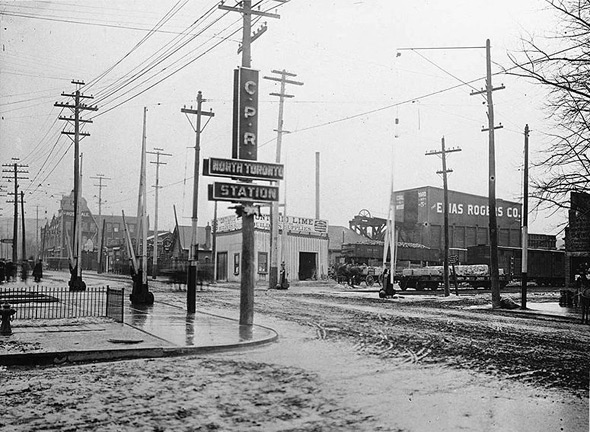
Yonge Street looking southwest from CPR North Toronto Station 1920
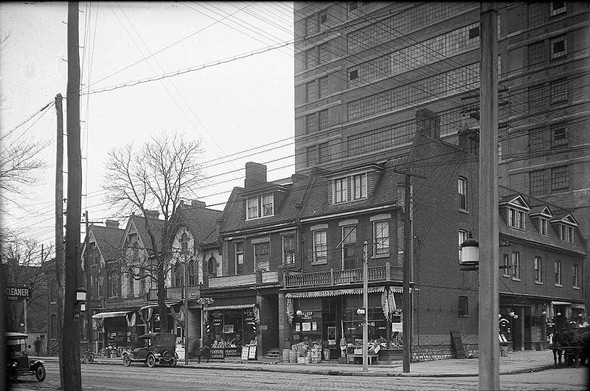
Northwest Corner of Dundas and Mutual streets 1920
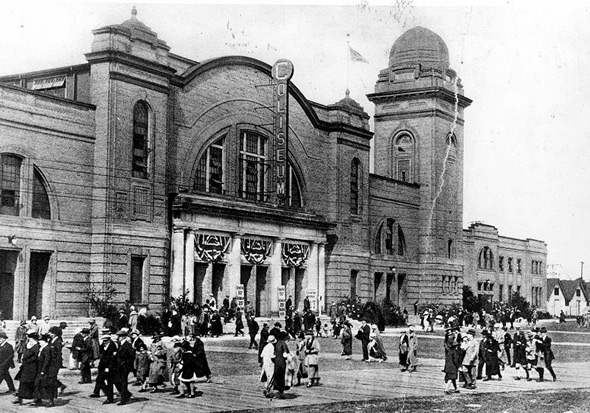
The Coliseum 1922
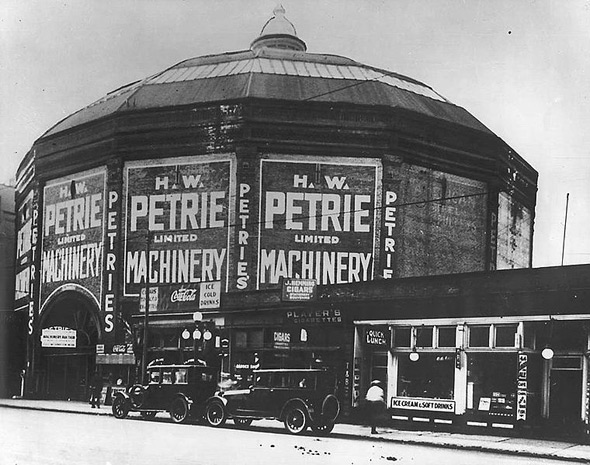
Cyclorama 1922
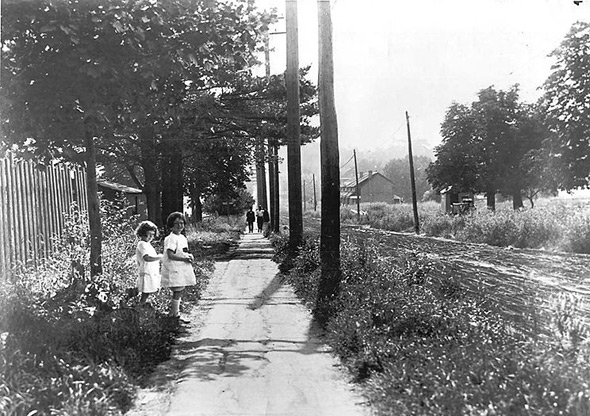
Eglinton Avenue looking west from Yonge Street 1922
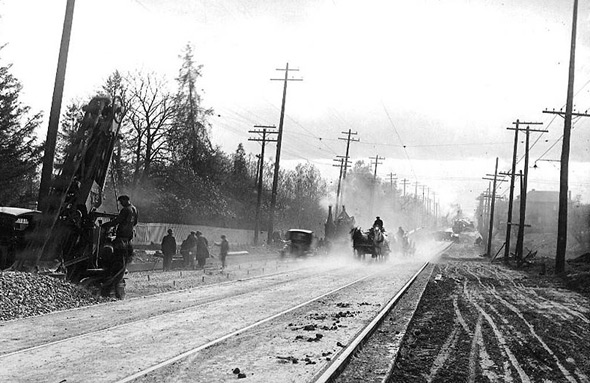
Yonge Street looking north at Lawrence Avenue 1922
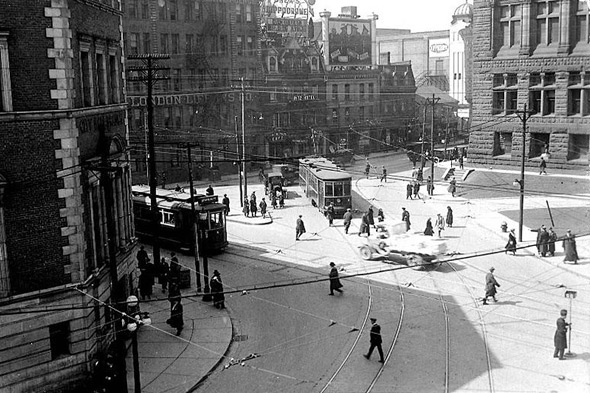
Queen and Bay streets 1923
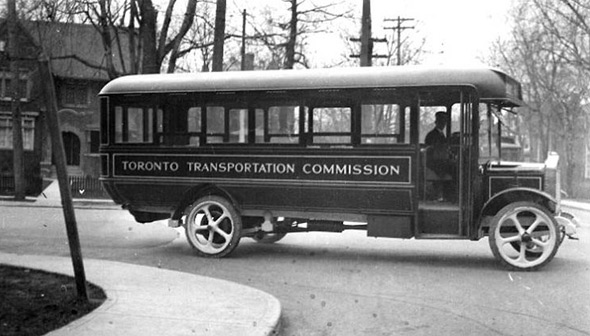
TTC Bus, 1923
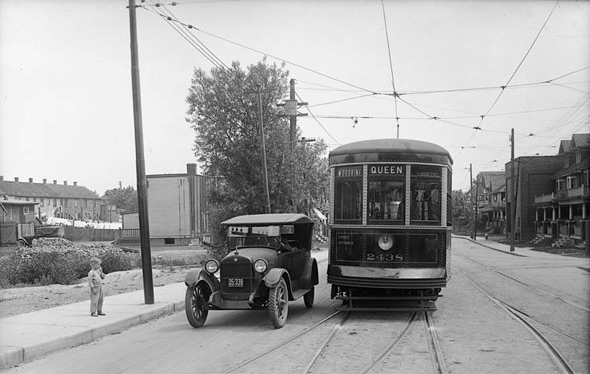
Toronto Transportation Commission car near Queen Street and Woodbine Avenue 1923
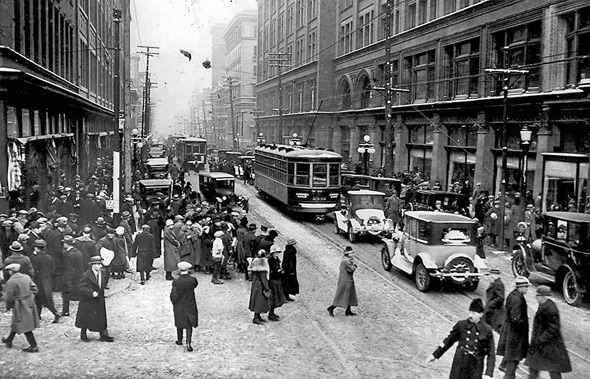
Queen Street looking east from James Street 1924
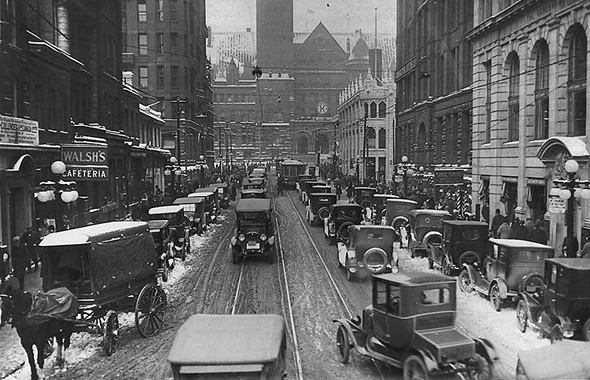
Bay Street traffic 1924
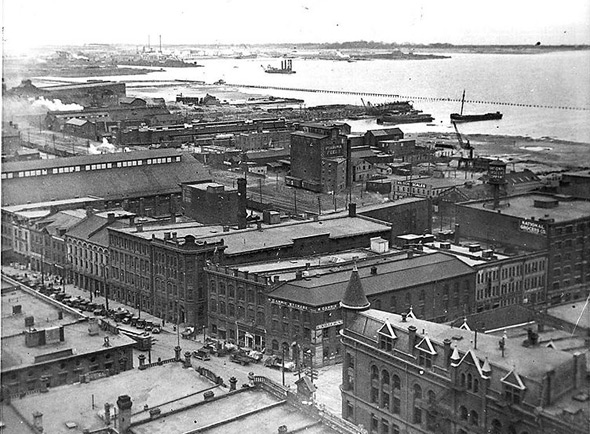
Front and Church streets looking southeast 1924
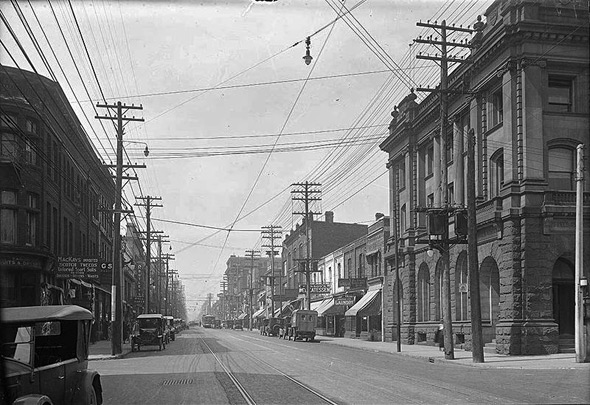
Yonge Street looking north from Charles Street 1924
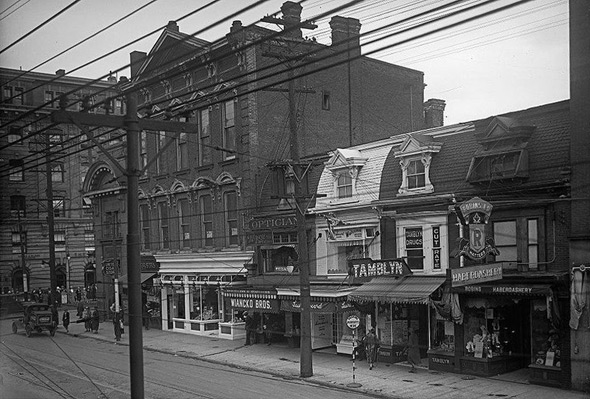
Yonge and Bloor streets 1926
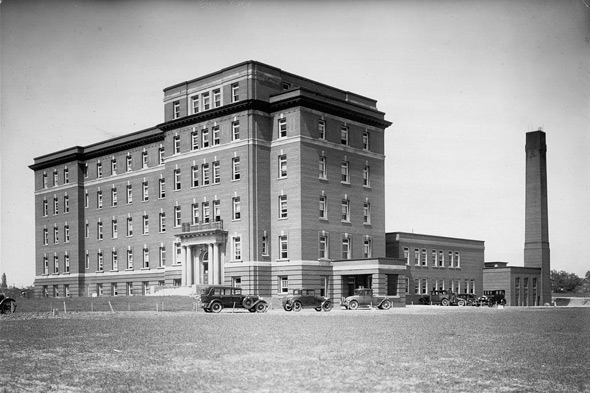
East General Hospital 1928
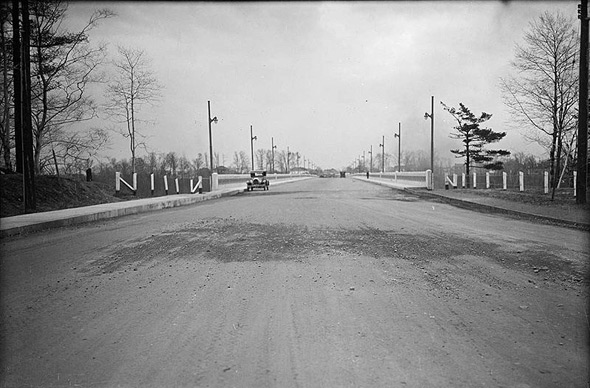
Recently completed Leaside Bridge 1928
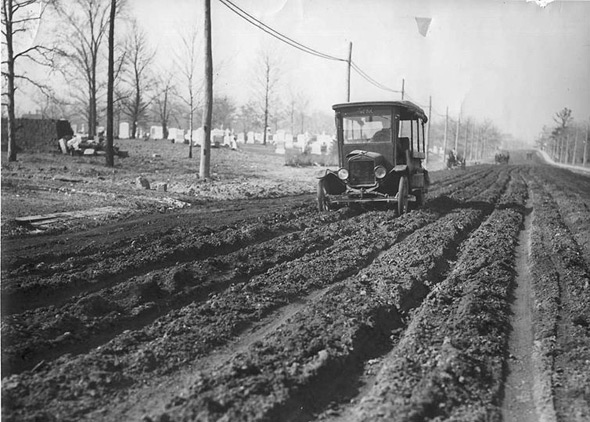
Mount Pleasant Road with cemetery in background 1928
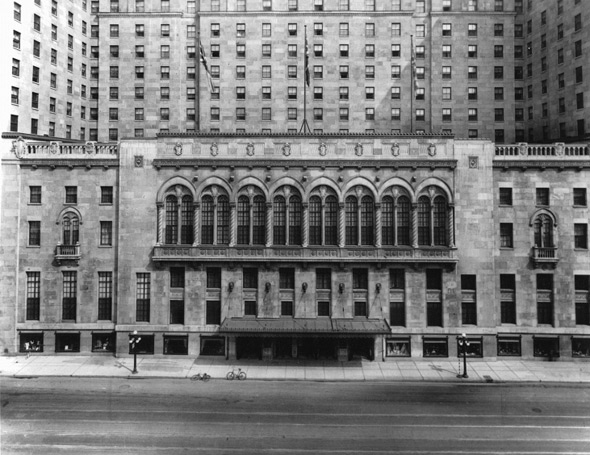
Front of the Royal York Hotel 1929
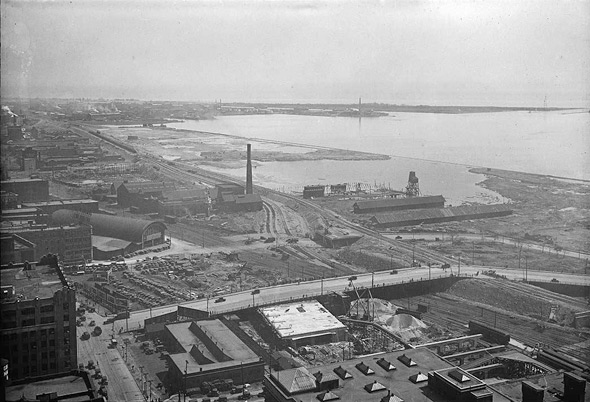
Looking east from the Royal York Hotel 1929
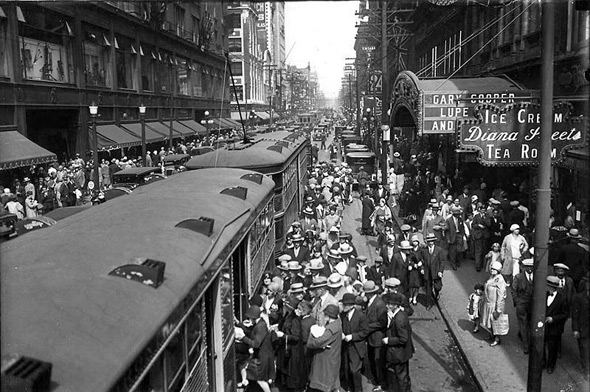
Trams at Queen and Yonge streets 1929
The Toronto Archives and the Wikimedia Commons. Writing by Agatha Barc.
Latest Videos
Latest Videos
Join the conversation Load comments







